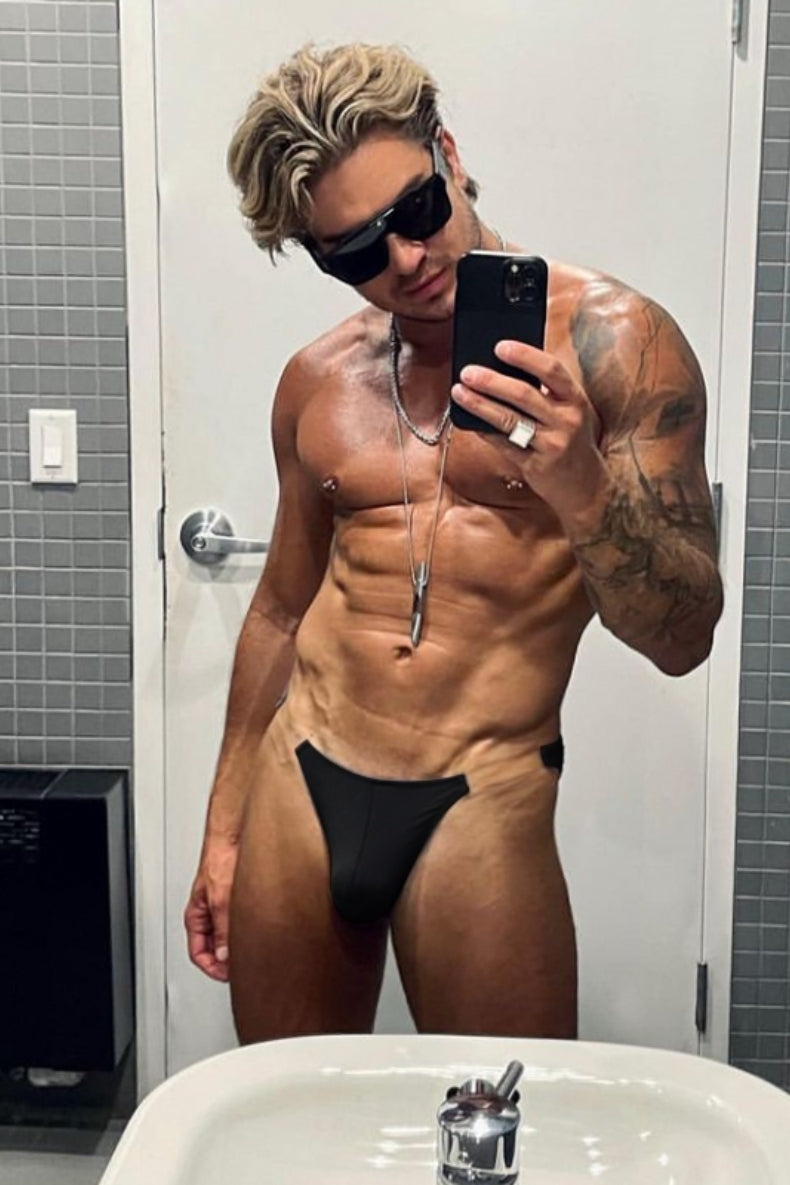Seriously, Why Do Gay Men Love Jockstraps So Much in 2024?
Believe it or not, the jockstrap was not invented to enhance your assets at Pride parades or circuit parties. Its origin story is far less glamorous but just as interesting.
The first jockstrap was created by C.F. Bennett of Sharp & Smith, a Chicago-based sporting goods company, in 1874. Bennett identified the need for supportive underwear for bicycle messengers, also known as "bike jockeys," who endured regular discomfort riding over cobblestone streets. Over time, the jockstrap became a popular and functional garment for physically active men. In fact, during World War I, the US Army issued a jockstrap to every soldier.
By 1897, Bennett had patented and begun mass-producing the "Bike Jockey Strap." Later that year, his company sold its trademarks to Russell Athletic, which went on to sell 350 million units worldwide. Unfortunately, the classic Bike brand jockstrap was discontinued a few years ago.
The brand’s termination wasn’t unexpected. Over recent decades, athletes have abandoned jockstraps for more comfortable and supportive alternatives. “It just wasn’t designed for comfort,” Bob Beeten, manager of the US Olympic Training Center, told Health magazine. “It rubs, chafes, and the straps go up your butt.” As more supportive forms of athletic underwear became available in the 1990s, jockstraps were phased out among athletes. However, among gay men, they remain incredibly popular as a form of lingerie.
The jockstrap entered the homosexual zeitgeist during the 1950s and ’60s, when gay fashion adopted an overtly masculine turn. Author Shaun Cole writes in his book, Don We Now Our Gay Apparel, “[Gay men] adopted a manly demeanor and attire as a means of expressing their new sense of self, and in adopting this look, they aimed to enhance their physical attractiveness and express their improved self-esteem.” These outfits often included bomber jackets, leather jackets, chaps, military uniforms, and, of course, jockstraps.
As such, jockstraps became a matter of fashion over function, and jockstrap brands, recognizing the burgeoning market, began advertising to gay men. “Jockstraps are definitely one of our most popular garments; we have them in every color and style you can think of,” says Monty Tayara, manager of The Men’s Room Toronto, which also has locations in Montreal and Chicago. “Many people come to our stores specifically for jockstraps. Sometimes they need to replace them because they left theirs at someone’s place the night before!”
Tayara believes the gay community has embraced jockstraps because they elicit a powerful sense of confidence. “It’s a peek-a-boo fantasy that stems from sports and porn,” he tells IN magazine. “Jockstraps make you feel sexy, and when you’re wearing them, there’s a sense of power that comes with that.” The garment’s design has evolved to better enhance the wearer’s assets, thanks to its supportive straps and pouch.
In the same way jocks were phased out among athletes, they became more popular in the gay community in the late ’70s. Jockstraps were regularly worn at gay bars, and brands sent go-go boys in jockstraps as a promotional tool. This exposure secured the jockstrap as a mainstay in gay male attire. Jockstrap nights became a regular event at gay bars until the AIDS crisis.
In the early 2000s, jockstrap nights reappeared, largely thanks to gay nightlife promoter Daniel Nardicio, who introduced them to revive Slide nightclub in San Francisco. He has since made a career out of underwear-themed events, throwing over 1,000 events, which speaks to the garment’s lasting influence.
The owner of Men’s Room also spearheads a popular gay event company known as Pitbull, where many attendees don jockstraps, according to Tayara. “Sexual freedom is something to celebrate, and we’re fortunate to be considered an event where patrons feel they can – without worry – put their best jock on and have a great time!”
The jockstrap’s purpose has evolved from a functional athletic garment to one that showcases assets. In many ways, the jockstrap can thank the gay community for its lasting relevance. And, in return, we have jockstraps to thank for helping our assets look fantastic. So thank you, jockstraps. And you’re welcome.



